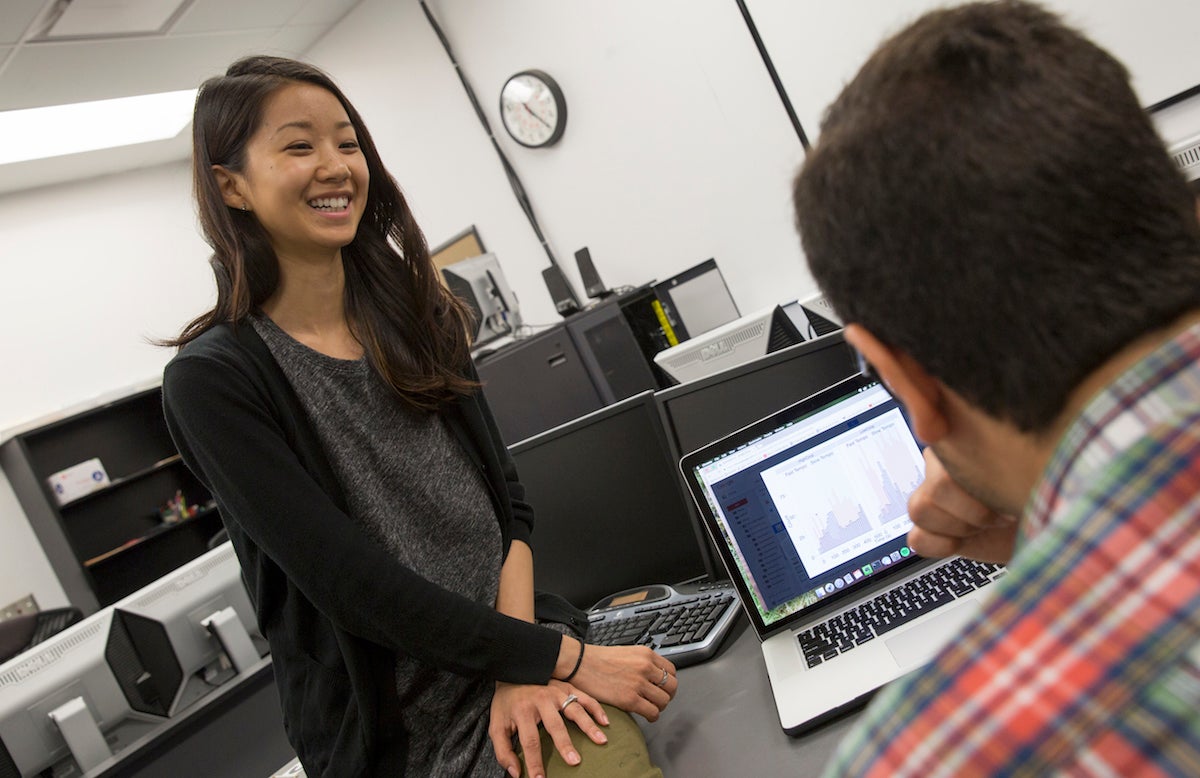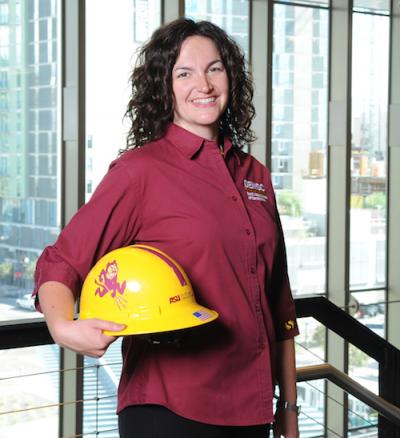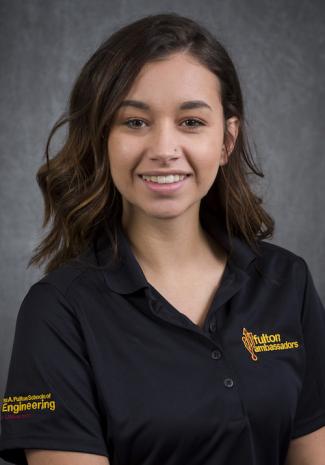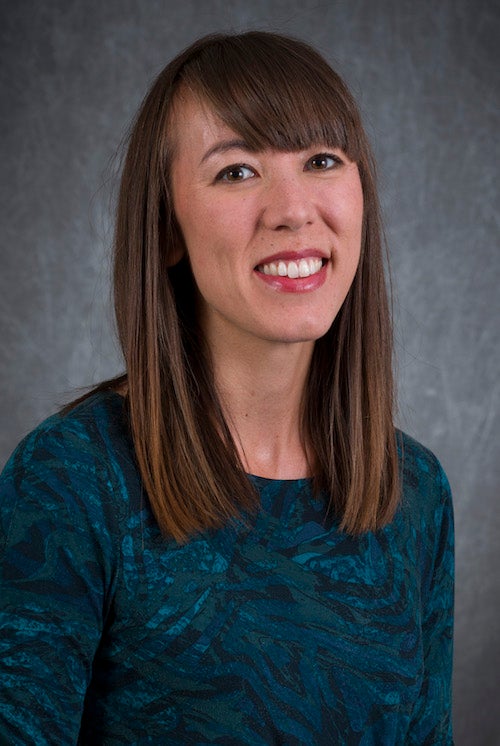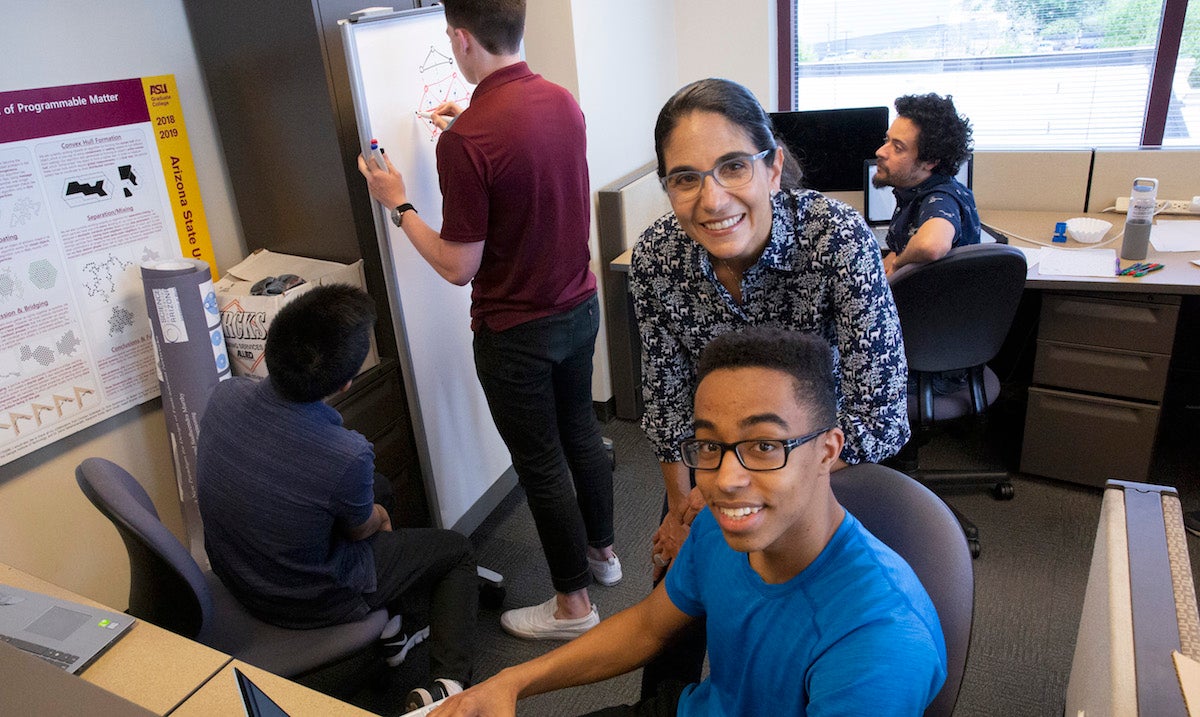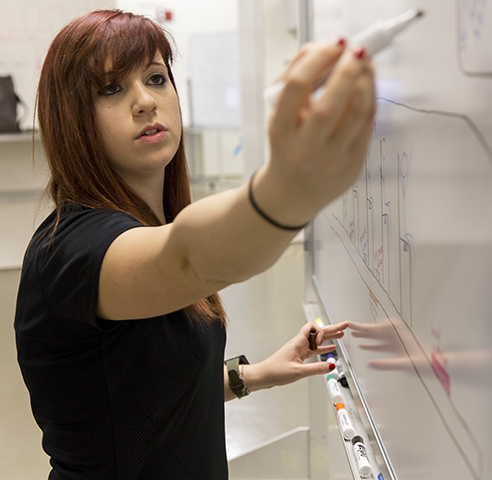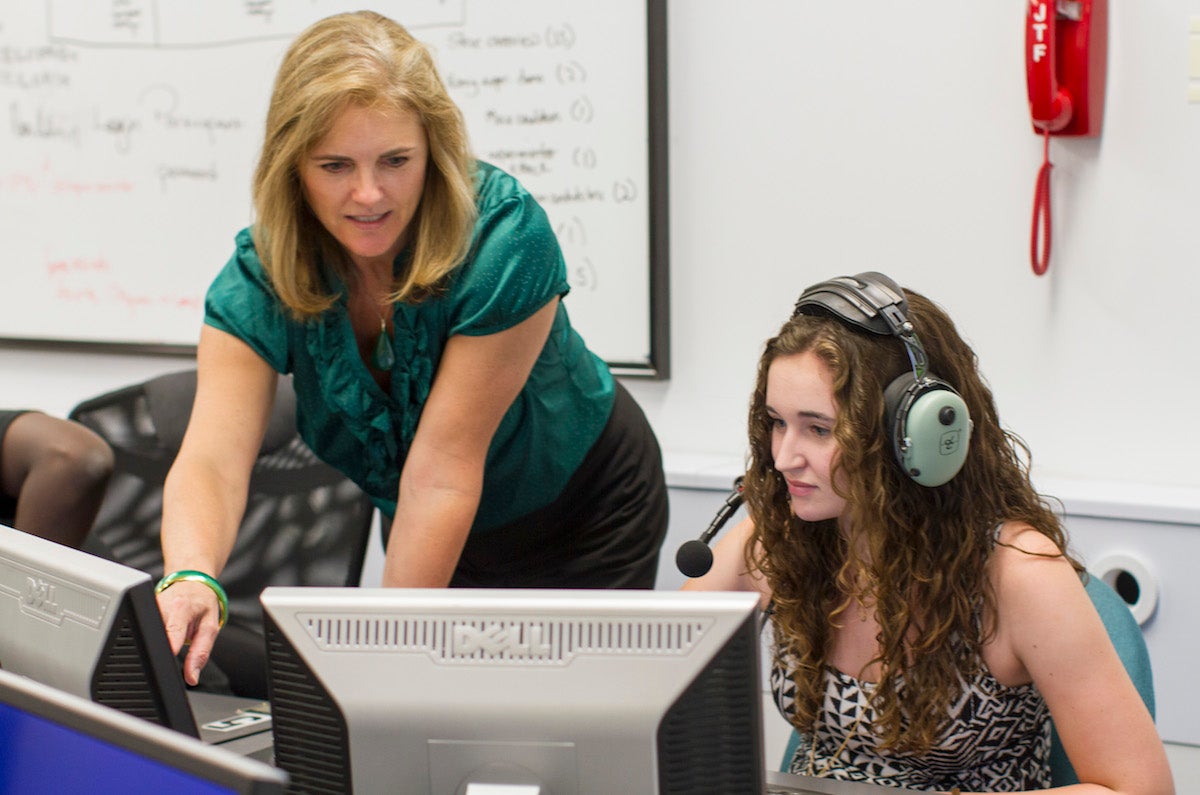Inspiring equality in STEM for International Women in Engineering Day

Brielle Januszewski working in the lab of Professor Bruce RIttman for a Fulton Undergraduate Research Initiative project to determine the short-term ecological toxicity of ozonation byproducts on seed germination and on the mutagenic properties of bacteria. Januszewski plans to pursue a doctoral degree in environmental engineering. Photo by Marco-Alexis Chaira/ASU
International Women in Engineering Day, celebrated June 23 and founded by United Kingdom-based charity Women’s Engineering Society, is an opportunity to raise the profile of women in engineering and focus attention on the types of careers available to aspiring engineers.
It is also a glaring reminder of the need to attract more women into STEMScience, technology, engineering, math. fields. According to the U.S. National Center for Science and Engineering Statistics, only 13% of engineers in the workforce are women.
As the day approaches, we talked with faculty and students in the Ira A. Fulton Schools of Engineering at Arizona State University to find out what they view as hurdles to attracting more women into engineering.
Inspiration comes from anywhere
Some people realize early in life they want to be an engineer, while others draw inspiration from unexpected places.
“Engineering as a career option first piqued my interest while watching an episode of 'Oprah' as a teen,” said Erin Chiou, an assistant professor in The Polytechnic School, one of the six Fulton Schools. “The episode was on dream jobs and featured a company whose early employees were a mix of industrial designers and engineers. I thought conducting human-centered research to create things that improved people’s lives was the most fun anyone could have in a job.”
Erin Chiou is working to understand how people might use or disuse a decision aid — for example, how pedestrians and other drivers cooperate with autonomous vehicles. Photo by Jessica Hochreiter/ASU
Chiou found a way to channel her desire to help people through human systems engineering, an emerging field that combines engineering and psychology to design systems that account for human capabilities and limitations.
Kristen Parrish, an associate professor of construction management in the School of Sustainable Engineering and the Built Environment, also discovered engineering in high school when she fell in love with kinematic equations, which describe how objects move.
“I decided that I wanted a job where I could do kinematic equations all day, every day,” explained Parrish. “I was already in love with buildings, so I started to look for a career that involved (both). My high school sweetheart’s older brother said, ‘Huh. That sounds like structural engineering.’ And so it began.”
With their intentions set during their teens, Chiou and Parrish went on to pursue undergraduate and advanced degrees in their respective fields.
That same passion, along with the need to prove naysayers wrong, is inspiring at least one undergraduate student to persist in her journey to become an engineer.
Kristen Parrish
“Growing up in elementary school, I was exposed to a lot of gender bias from my small hometown that steered me away from engineering,” said Elizabeth Jones, a third-year student studying electrical engineering. “However, I really enjoyed math and science, and I liked solving problems. It wasn’t until high school that I even considered engineering to be something that I had the option of pursuing. Once I realized that it was an option, I knew I wanted to be and could be an engineer.”
In college, Jones is helping to ensure other young women feel welcome in engineering spaces as the outreach coordinator for the ASU chapter of the Society of Women Engineers, an organization that advocates for inclusion and community among women in engineering and technology.
Success in STEM
STEM-related fields are open to everyone, especially students who want to make a difference and have an impact on the world around them.
Andrea Richa, a professor of computer science in the School of Computing, Informatics, and Decision Systems Engineering, offers the following advice to students entering STEM fields: “First of all, be passionate about it,” Richa said. “Second, enjoy math and other science subjects and have an analytical mind. In computer science and engineering in general, it is important to combine creativity and problem-solving skills.”
A penchant for finding solutions is a key to success for any aspiring engineer.
“(Have) a desire to solve problems and, in my view, a desire to change the world,” said Parrish. “If you have a problem that STEM can help to solve, try to stick it out through the classes you may not love. What’s important in the end is that you love what you do.”
When asked what she thinks students need to be successful, Brielle Januszewski, a Barrett, The Honors College student majoring in civil engineering, said, “There are really no specific qualities that spell success for engineering. Anyone can do it if they are passionate and dedicated.”
Elizabeth Jones
Samantha Janko is a graduate student in The Polytechnic School studying systems engineering. She believes change begins with instilling confidence in women who’ve chosen to pursue engineering.
“Women need to feel comfortable and confident working and expressing their ideas with men, and vice versa,” said Janko. “Breaking down the stigma starts with fostering open communities and communication, and less with providing special opportunities that encourage only one particular group.”
Recognizing the disparities among women in engineering is on people’s radar, and more than ever, conversations about recognizing bias and how to combat it are underway.
“Making both women and men aware of things like implicit bias and barriers, both real and perceived (will help get more women in STEM careers),” said Sydney Schaefer, an assistant professor of biomedical engineering in the School of Biological and Health Systems Engineering. “For example, there is often implicit bias in recommendation letters for male versus female postdoctoral applicants. I think most people want to create an equitable environment and support inclusion, but really are just unaware of unilateral policies and work culture.”
Changing the landscape one woman at a time
Despite efforts by universities, recruitment teams and community organizations to draw more underrepresented minorities to STEM programs, engineering-related industries are still male-dominated.
“We still have a long way to go,” said Richa. “When you look at the percentages of women in engineering and STEM fields, those are still very low and have not changed much as a whole in the past two to three decades.”
Sydney Schaefer
Part of finding success in STEM careers is making sure engineering students cross the finish line by earning and going on to use their engineering degrees.
“Institutions should focus on early pathways to STEM, and not only on recruiting but also retaining women in STEM,” said Chiou. “Retention is not just about structures of support, but also about the organizational culture and ensuring that the environment they are working in allows women to thrive.”
Retention is not just a problem in women studying to become engineers — it remains an issue as women enter the workforce. More than 30% of women who leave their engineering careers do so because of workplace culture. Schaefer believes diversifying leadership in organizations and industry can help keep women in STEM.
“It seems as if there are more women getting into engineering, but the challenge remains in upper-level management and administrative positions,” said Schaefer. “These are the positions that call the shots, influence policies and create work environments, so it will be exciting to see how these positions level off in the future.”
Andrea Richa is working on a team to understand the algorithmic and physical underpinnings that drive collective behavior such as schooling in fish and rafting and bridging in ant colonies. She hopes to apply that knowledge to physical materials that can autonomously change their properties as a reaction to their surroundings. Photo by Erika Gronek/ASU
Transform the future
New pathways for entering the field may also allow women to explore their varied interests because of the array of cross-disciplinary opportunities. Professor Nancy Cooke, who has a background in cognitive and experimental psychology and chairs the human systems engineering graduate program, knows this firsthand.
“As a child I thought I would never want to be an engineer,” said Cooke. “It seemed boring and nerdy. However, I have found a career that balances my techno nerdiness with social science that enables me to improve people’s lives.”
Cooke believes areas like human systems engineering, sustainability and biomedical engineering — ones that demonstrate an immediate impact for individuals — have helped attract more women by combining social or biological science with engineering.
Samantha Janko
No matter what field of engineering women choose to pursue, the ability to solve problems with others is rewarding.
“I love being with a group of people who may not have otherwise worked together and sharing ideas towards a common objective,” said Janko. “We can all learn from each other.”
As engineering and computer science programs grapple with ways to include and increase the number of women in these fields, Januszewski feels it’s important to remind women they belong in these spaces.
“Men and women have the same capabilities when it comes to intelligence and academic success, so the barriers that hold women back from realizing this need to be broken down — teaching children, especially women, to be bold, to take risks, to be confident in themselves,” said Januszewski. “No matter the path that is taken towards equality, it must be done with everyone: men, women, gender nonbinary … everyone!”
Professor Nancy Cooke (left) conducts research on human capabilities and limitations to help make technology work better with people. Photo by Jessica Hochreiter/ASU
More Science and technology

What does a spacecraft, a skeleton and an asteroid have in common? This ASU professor
NASA’s Lucy spacecraft will probe an asteroid as it flys by it on Sunday — one with a connection to the mission name.The asteroid…

Hack like you 'meme' it
What do pepperoni pizza, cat memes and an online dojo have in common?It turns out, these are all essential elements of a great…

ASU professor breeds new tomato variety, the 'Desert Dew'
In an era defined by climate volatility and resource scarcity, researchers are developing crops that can survive — and thrive —…


